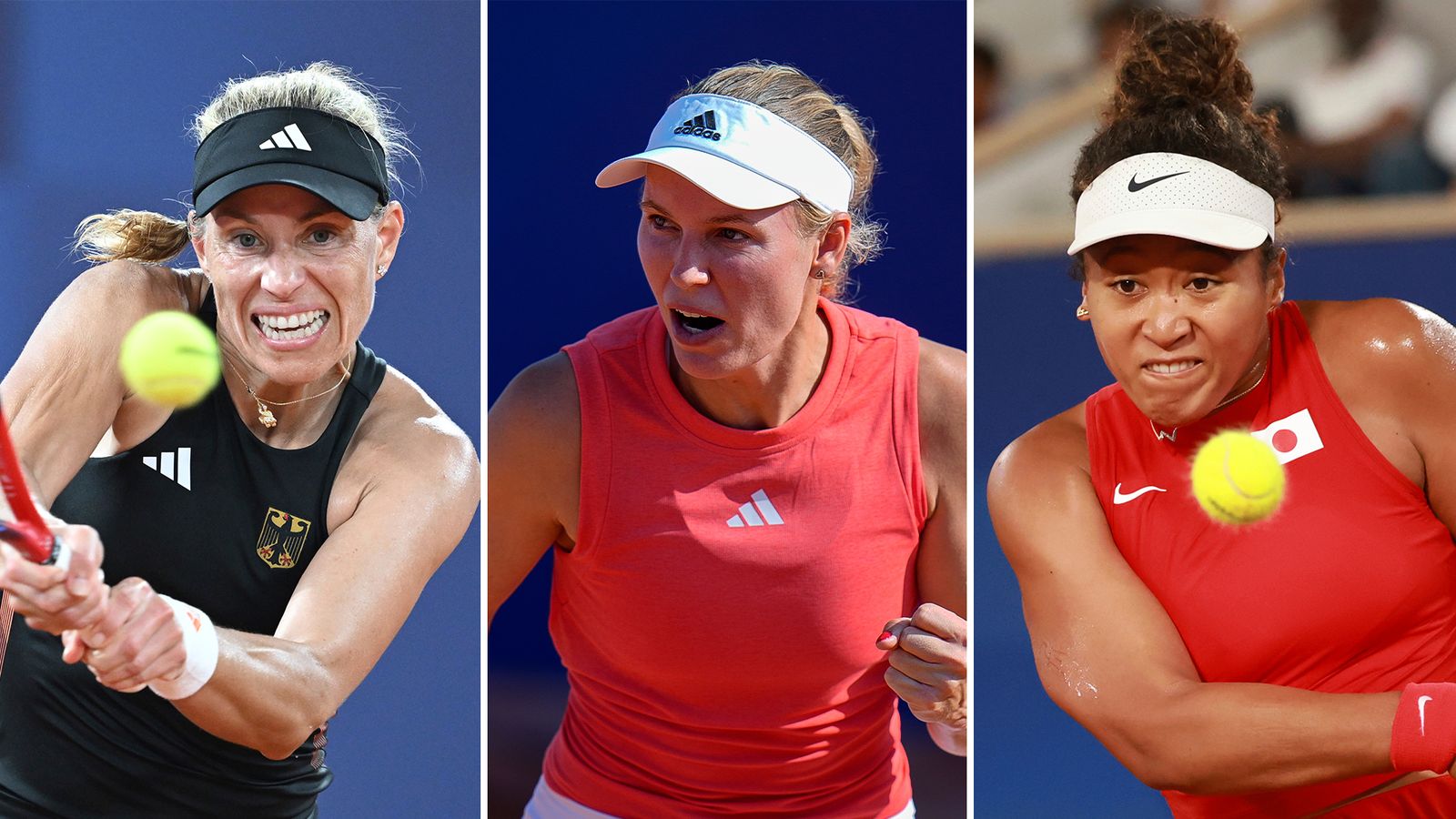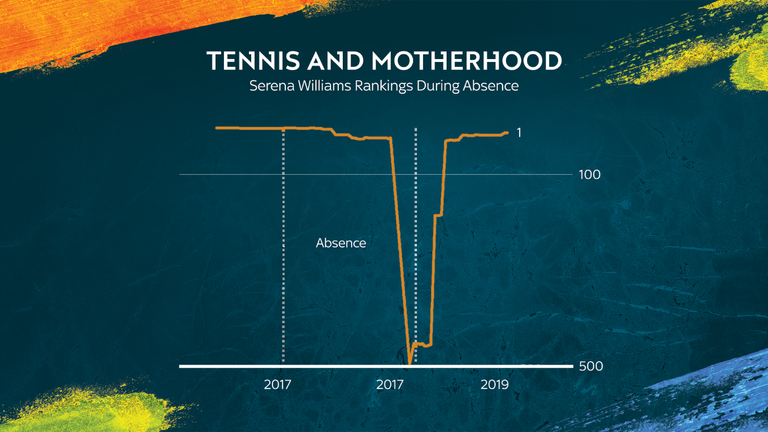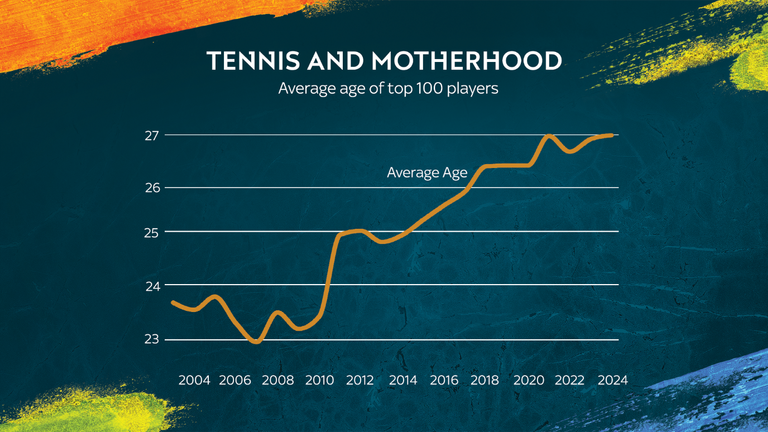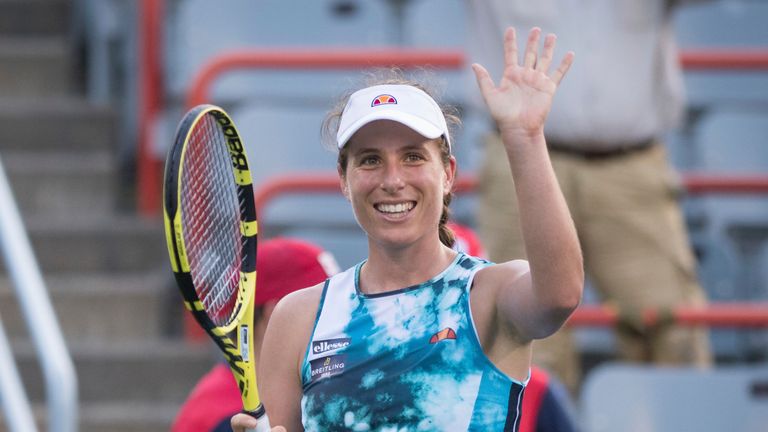
Grand Slam champions Naomi Osaka, Caroline Wozniacki and Angelique Kerber are all part of a growing trend that sees more mothers competing on the WTA Tour.
Osaka and Kerber both gave birth in 2023 and returned to competing at the top level within 18 months, while Wozniacki gave birth to her second child in late 2022 and came back to tennis in August the following year.
The WTA says there are around 20 mothers playing on tour. But what is driving this change?
“There’s obviously a lot more mothers on tour but clearly in the past having a child was a bit of a career-ender or people would say it was,” Osaka told Sky Sports earlier this year.
“I think that having a family is a beautiful thing and we should all try to support it as best we can.”
Twenty years ago, the top 100 players were, on average, under 24. Now, they are almost 27, giving athletes a bigger window to start a family and return to the sport.
“I think because of the way the game has improved and the things around the game when it comes to physical health and nutrition, players are able to elongate their careers,” said former British No 1, Johanna Konta.
“Women are realising they can physically come back and deal with the recovery process from childbirth.”
‘Tennis is expensive with or without kids’
Prize money is also another factor that is helping tennis players choose motherhood alongside their careers.
This year, Wimbledon paid out a record £50m with the two singles champions taking home £2.7m each. The prize money has doubled from £25m in 2014 and is five times the amount 20 years ago.
For many players, feeling financially secure is another reason why they feel comfortable stepping away from the tour.
“You don’t really get much support in tennis. You get your one hotel room paid for if you play at the WTA level,” Naomi Broady said.
“At the ITF level, the hotel expenses are on you. It’s a very expensive sport to play, whether you have children or not.
“I’d have to make enough money to cover the extra costs of children, hotels, and travel.”
While absent, mothers see their rankings collapse.
In 2017, Serena Williams won the Australian Open final while eight weeks pregnant and did not drop a single set on her way to lifting the trophy.
Williams is not the first elite athlete to compete during a pregnancy.
In 2014, America’s Alysia Montano ran the 800m in the US Track and Field Championships despite being 34 weeks pregnant.
More recently, AC Milan set up a maternity policy for their women’s players and staff to guarantee contract renewals during pregnancy, becoming the first club in Europe to do so.
Changes are being implemented to help sport adapt to the needs of motherhood and tennis is no exception.
Williams was ranked 453rd in the world before her Grand Slam return at the 2018 French Open.
Low rankings mean tougher draws and qualifying for fewer prestigious tournaments and since then the WTA has upgraded its rules to protect rankings for returning mothers.
“They didn’t particularly used to have a maternity rule. It was almost just the same as the injury timeout,” Broady said.
“So you had two years to return to sport, after which you could freeze your ranking and use it for eight tournaments on your return.
“But since 2019, the maternity rule now allows three years from the birth of the child to return and you have 12 events to enter with your protected ranking from when you paused it.”
Maternity pay challenges remain
Most of the prize money goes to players in the world’s top 200.
Those who fall outside of that bracket typically earn less than £50,000 and as independent contractors, tennis players are not entitled to maternity pay which poses a significant challenge for many.
“I think simply put if you do not have the money to be able to invest into your career, it will be very difficult to make a comeback,” added Konta.
“I mean, if you have reached a certain level in the game you have certain opportunities available to you such as wild cards and big events so you can possibly fast track your return.
“However, if you don’t have that benefit then it probably is tricky to come back.”
Two-time Grand Slam champion Victoria Azarenka wants to see the sport make unprecedented changes in the pursuit of equality.
“The next steps we’re hoping to do is create a maternity financial plan, I think that’s something that’s never been done,” Azarenka told Sky Sports’ Karthi Gnanasegaram in March.
“Also, the benefits of disability insurance. It’s a very physical sport. You never know what can happen, and you dedicate your whole life, and things do happen where you can be stranded for a period of time without any financial income.
“So, I think that’s really important to find a way how we can develop those programs and pension plans but a maternity plan is my number one priority.”
Stream Sky Sports Tennis and more with a NOW Sports Month Membership. No contract, cancel anytime.






